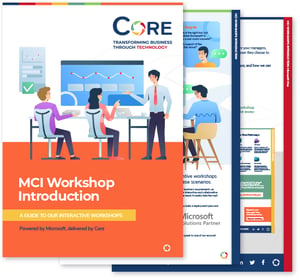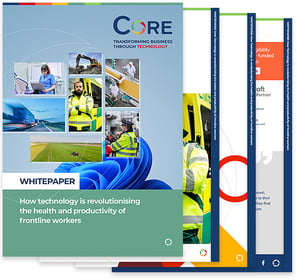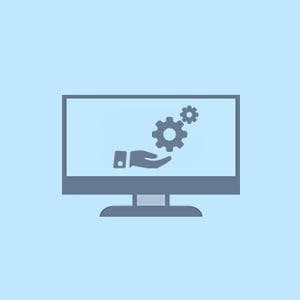So far, we have covered the compelling reasons for migrating your Enterprise to Windows 10. The one barrier that remains for most Enterprises attempting the transition to Windows 10, is managing the physical migration. It is not as easy as a home user making the change; there are business-critical applications and other considerations to take into account.
The good news is that all of these can be managed relatively easily. This week’s blog explores some of the ways that you can break through these barriers and complete a migration onto the Windows 10 platform.
1. User Adoption – As discussed in the first blog post of this series, user adoption is probably the easiest challenge to overcome. Most home users upgraded to Windows 10 on their personal machines back in the first year of its release. The look and feel of Windows 10 is very similar to Windows 7, and the UI has been updated to make user access to settings -and other more challenging features of the device- more intuitive and less threatening. If there are still concerns, most providers will be able to offer training support for users as part of the upgrade process.
2. Device Compatibility – Windows 10 was designed to work on a wide range of devices and the minimum specification requirements are very meagre, meaning it’s highly likely that all of your current devices will be capable of running Windows 10. At the bottom end, as long as the device has a processor running at 1Ghz or higher, at least 1GB of RAM and a 16GB HDD, you can install Windows 10. The software is designed so that, in many cases, Windows 10 can provide a performance boost on some older machines. We have a customer in the public sector running seven-year-old laptops that we have successfully migrated to Windows 10. It is worth noting that some of the advanced security features of Windows 10 cannot be switched on with some older devices if they have an older TPM chip, however, you will still be in a better position than you are on Windows 7.
3. Deployment Models – Deploying Windows 10 can be completed in a number of ways depending on the requirements of your Enterprise. If you are running SCCM or InTune, Windows 10 can be deployed as a package update once you have created your device-specific build. We have also supported customers with a range of drip feed migrations including the use of onsite engineers with USB keys to do a device per device upgrade. We have also utilised swap stock devices or natural device churn to slowly migrate users on to the new platform, in a controlled programme.
4. Application Compatibility – Microsoft quotes over 99% application compatibility for users upgrading to Windows 10, which is a great statistic. The sheer volume of applications out there means that there are still a lot of apps that fall into the <1%, however, this number is reducing on a daily basis. Microsoft is playing a huge supporting role in helping Enterprise customers benefit from existing work to resolve application compatibility issues, with a host of helpful information available on the Windows 10 Developers page on the Microsoft website. This has a handy list of applications that are ready for Windows 10, as well as some other items that we will discuss below.
5. Windows 10 Program Compatibility Troubleshooter – Windows 10 includes a Program Compatibility Troubleshooter which can automatically find the best compatibility mode for a range of applications that worked on previous versions of Windows.
The principle, is that the Windows Operating System is like a ‘student mentor’. As it existed in previous versions before this, it has an idea of how to ‘communicate’ in the language that the ‘younger student’ understands. This is a solution for simple apps, and it may not be the most elegant solution, but it is worth exploring.
As with previous blogs in the series, we have covered the low-hanging fruit in the points outlined above. These items alone may be enough for your Enterprise to successfully make the leap to Windows 10. However, if you still have compatibility issues, the following items will be useful…
6. Desktop Application Convertor – The Windows 10 Developer pages have a link to the Desktop Application Convertor (Desktop Bridge) which can enable simple applications to be converted into a 'Universal' Windows application. This service is really aimed at software developers, but if you have an in-house application that doesn’t work natively with Windows 10 this can be a great way to get it converted.
7. Upgrade your App – It’s highly possible that your incompatible application might be compatible with Windows 10 on its latest version. There is an argument that you should get up-to-date and switch to the latest supported version of any application to ensure that you are secure and fully patched, as well as benefitting from the latest and greatest user experience. If you are out of support, the same argument applies. This might be a great time to assess the criticality of the application and, if it is something you need in your future, update your support contract and get upgraded.
8. Rationalise your Apps – Migrating onto a new device Operating System is a great opportunity to have a look at your ecosystem and decide if you can rationalize your current application landscape. Chances are you will have users running apps that can be replaced with products that are part of your existing Microsoft license plan (i.e. Tableau can be replaced with Power BI, AirWatch or Mobile Iron with InTune), maximizing your return on investment from that expense while removing unnecessary costs elsewhere in terms of license fees and support. Microsoft’s Edge browser is a simple example of this; it allows viewing of PDF files so you no longer need an Adobe license.
9. Move to the Cloud Version – The majority of major software vendors now have cloud-based offerings running alongside their on-premise applications. By their nature, the cloud versions tend to be universally compatible, with access via a supported web browser as a final route if there is no direct desktop application. Generally speaking, these are the best way to go. The cost is normally comparable to the on-premise app, but with none of the internal infrastructure costs to cover; the software is always the latest and greatest version, and this supports the modern workplace ‘anytime from anywhere’ model of productivity that most businesses are striving for.
10. Application Containerisation - If you have a legacy application that is business-critical and no cloud offering exists, there is an option to “containerise” the app. Essentially, this is wrapping the application in a bubble of its supported Operating System, with a set of conversion connections that enable it to work on another platform. There is a huge ecosystem of providers who can do this for your apps, so it’s worth shopping around. The costs and timescales involved are often way less than you might expect, as quite often they will have completed this work for another user of your app already. It may even be available as an “off the shelf” solution.
Any of the above items should help you to run through the blockers that are stopping you from moving your Enterprise into Windows 10. There will be some work and cost involved, but you will have to do it at some stage. Windows 7 loses mainstream support in 2020, at which point you will either have to pay for extended support or run unsupported. This will place your business at risk and negate any savings you might make in the short-term. As this deadline draws nearer, activity for the services that can help you will be increasing and you run the risk of joining a long queue or not being able to work with a best of breed provider. This really is one of those cases where you should “book early to avoid disappointment”.
If you want to make the leap into Windows 10, Core can help you. We have helped a wide range of customers in both the private and public sector with their transition to Windows 10 and supported the full adoption across their Enterprises. We offer ongoing services and support to help customers manage their devices and transition through the updates and feature releases.
Contact Core on 0207 626 0516 or by email on hello@core.co.uk if you would like to talk to one of our industry leads about how we have helped customers in your vertical migrate to Windows 10, and how we could help you.








